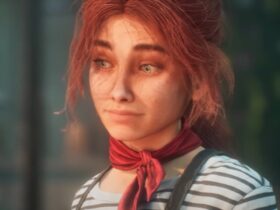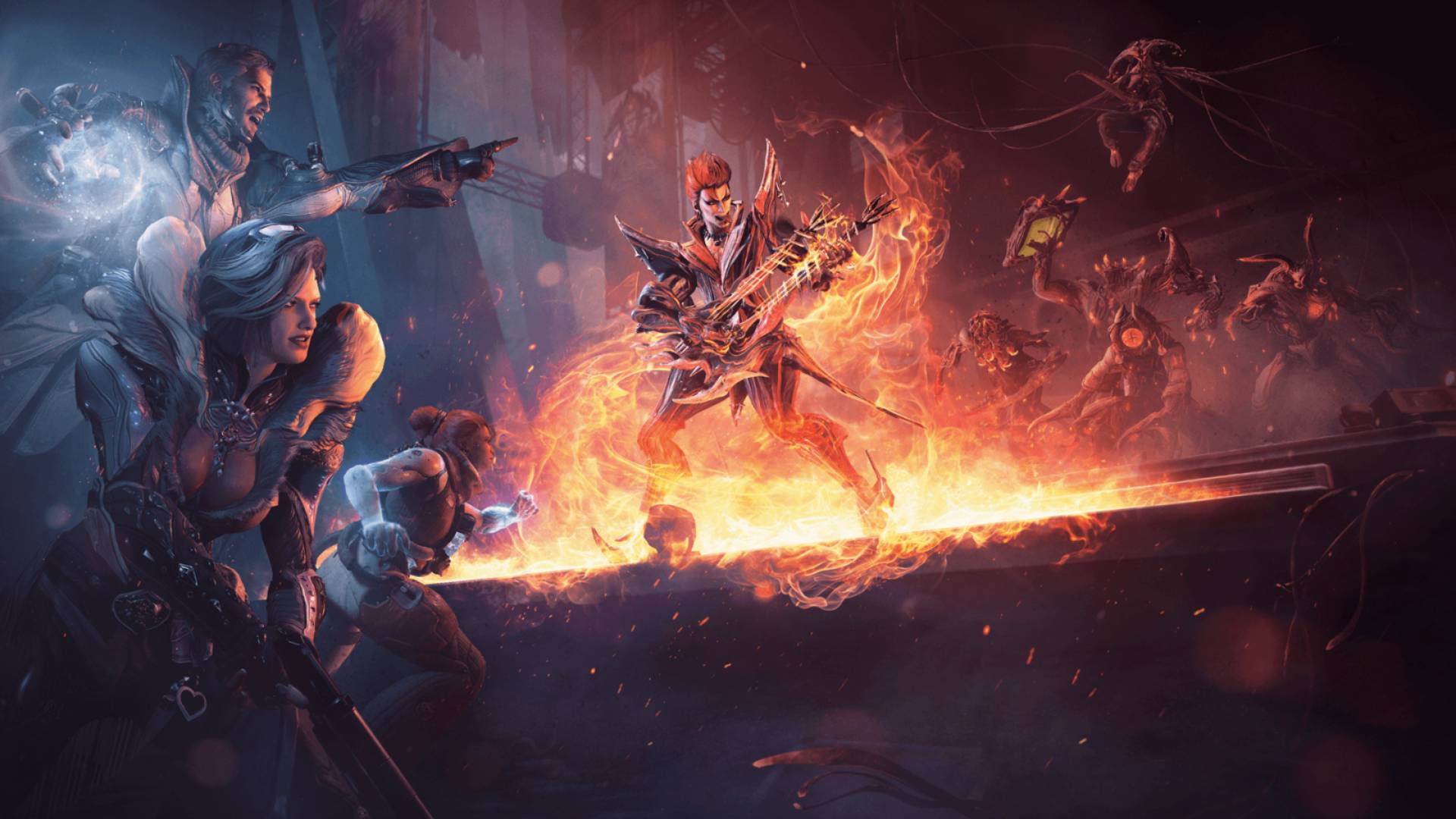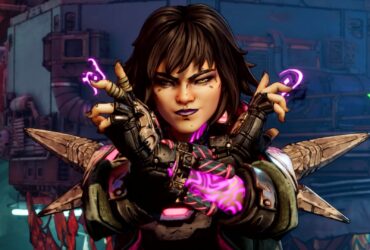I’ve worked on a lot of really cool things in my career. There’s Diablo 4, Overwatch 2, and, at the moment, Vampire: The Masquerade – Bloodlines 2. All of these things, however, existed before I started working in videogames – they’re all decades in the making, and I rocked up at the final hurdle (the most exciting part, of course). But over the past couple of years, I’ve watched Warframe 1999 go from a five-minute teaser trailer to a fully realized questline, spanning two colossal patches packed with hours of material. In some ways, writing this article feels like we’ve come full circle: I was there at the beginning, and now I’m here at the end.
With the launch of Techrot Encore, the multiplayer game’s latest chapter has drawn to a close. The curtains are called, the lights are off, On-Lyne’s no longer in the house. It’s been an atomicycle ride through a world steeped in nostalgia and Metal Gear Solid-esque grit – the party of a lifetime – but now, it’s finished. “When Rebecca [Ford, creative director] started with the idea for Warfame 1999, a lot of us looked at her like ‘are you crazy?’” design director Pablo Alonso tells me with a laugh. “However, time has proven her right. You should never doubt her.”

I say this to Ford in an exclusive PCGamesN interview a few weeks later, prompting a laugh from her and community director, Megan Everett. I ask whether or not the duo felt like the infested boybands, romancable companions, and complete departure from regular storytelling was worth the risk, and the answer is a resounding yes.
“We worked very hard on 1999,” Everett tells me. “I agree with what Pablo said: it was a risk. It’s such a deviation from what one might classify Warframe as, especially if you played 2013 or 2014, took a break, come back and go ‘what are these people doing?’ It’s so different, but I think the team executed so well on making it feel like it belongs in the game, that it belongs in the story, that we’re telling the right story, and we’re just trying to be weird and different with it.
“From a community standpoint, speaking for myself, it did better than I ever could have hoped for,” she continues. “We continually try to raise the bar with updates – I viscerally remember Whispers in the Walls and how that made me feel, and we were riding that high and trying to reach that high again with 1999. The protoframes did better than any of us ever expected them to – I don’t think there’s ever been this level of fanart around something we’ve done for Warframe. Community-wise, it’s raised the bar even higher.”
“Our constant struggle is ‘how are we going to make an update so players feel like they’re invested, and that investment in our game and our story is rewarding?’” Ford tells me. “Sometimes we go all in on setting, stories, and systems like we did on 1999. But how do we still excite people after doing something that weird? Can anything be as exciting as 1999 again? We think so, but it’s going to be very hard to measure because a lot of our players are along for the ride whatever happens, but the 1999 event probably felt like the World Cup of Warframe. I’m hopeful we can do it, because we know what story we want to tell. We’re moving onto new directions because we have other things this year that we must do, so we’re doing those.”
But aside from the “weirdness” and the fact that 1999 was a whole-new look for Warframe, the level of production felt sky high. With heavy hitters like Ben Starr, Nick Apostolides, and Alpha Takahashi getting involved, as well as a 1999-themed TennoCon that felt bigger than anything the team had done before, I ask if this is the level of production value we can expect going forward, or if this is reserved for these “World Cup” moments that roll around every four or so years.
“The production value is certainly something that we’re hoping to maintain,” Ford says. “We want a really high quality production experience for the rest of the updates this year in particular. When it comes to picking folks to join whatever it is we’re making, I already have my wishlist started for the rest of the year on who could go where and how that could happen. I consider myself a budget [Hideo] Kojima with my celebrity obsession,” she laughs. “Not really! It’s more the existing fictional characters that I’m like ‘oh, a human was involved in that, how do we get them involved here?’ We love playing and making games, so if we see something that would really work in a different way with our world, we love that.
“It’s kind of the crutch of being a 12-year-old game,” Everett continues. “We have to take these risks; we have to go abstract with the story and where we want to take it. You can even look back at The New War, which was a leisurely six-hour quest that took so much time to make, that had the reception that it did. Then we deviate a little bit. We go Whispers in the Walls, which is a smaller quest but there’s a whole-new Sanctum Anatomica: it’s quality over quantity. We really try to find that balance: we know players want the story, but we’ve got to give them stuff in between to maintain the velocity that we’re going at.”
That, of course, leads smoothly into my next question: what happens next? Is it a case of reverting back to a more standard Warframe experience, or is the focus on continuing to try new things that are akin to 1999?
“That’s the existential dread that sets in” Ford says with a laugh. “I truly believe that a game as a service is only as good as its last update; it’s a cruel slogan that’s quite true. We have a fake rule internally where we have to make the right decision 80% of the time – that usually gets us by. You don’t know how things are going to go, but you ultimately need to work on what seems fun to you. ‘What would be the most fun relative to what we did, which was motorcycles, the Drifter, infected Scaldra?’ And then ‘what are we missing that would make things feel fresh?’
“It’s a very difficult gamble each time we pick a new direction, but the way the deck is stacked for us is that we want to make what’s fun for us and what we’re good at making quickly, and we know where variety is needed. You don’t want to serve 1,000 hamburgers – you want the buffet. We are very buffet focused. We have a big buffet. We just need to believe that it’s fun and true to Warframe. It can be weird, but it can’t be wrong.”
“We play a lot of games, and a lot of them hugely inspire us,” Everett says. “Although it is a bit scary and risky to put out a game or to keep updating a game, there’s always going to be inspiration coming in left and right, be that from a HoYo game or a Final Fantasy or whatever.”
“If you make games you are not safe,” Ford adds, stern and stony-faced. “We will play your game and we will love it. That is a threat.” Threat received, hamburgers required.
As we look to the future of the Origin System, as well as the upcoming TennoCon and its associated concert, there’s excitement in the air. What comes next will likely remain a mystery until then, but in the meantime, the Höllvania Central Mall beckons; there’s whispers in its walls, and they’re oh so enticing.















Leave a Reply